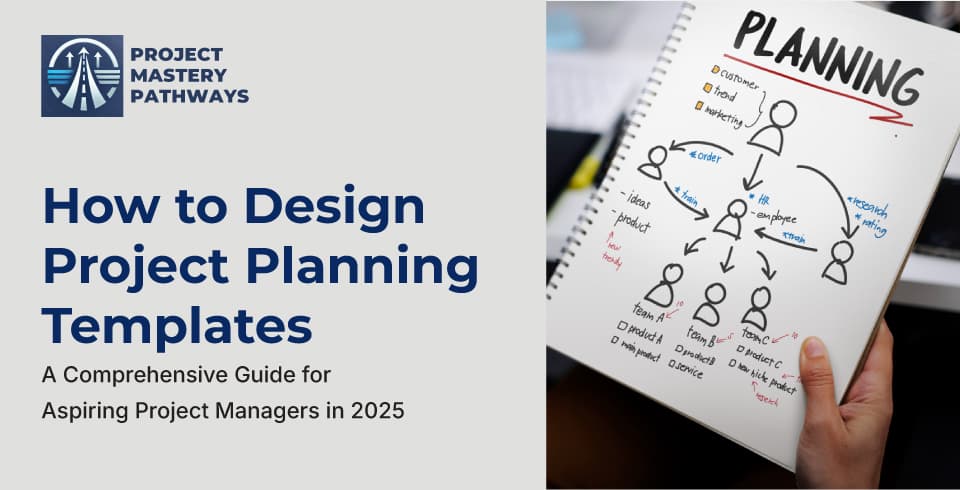Are you tired of starting every new project from scratch, scrambling to remember all the essential planning elements? Do you find yourself reinventing the wheel each time you begin a project, only to realize later that you’ve missed critical components? This common challenge plagues many new project managers, leading to inconsistent planning quality, missed deliverables, and unnecessary stress.
The solution lies in creating well-designed project planning templates – standardized frameworks that ensure consistency, save time, and improve project outcomes. By the end of this guide, you’ll understand how to design effective project planning templates that will transform your approach to project initiation and set you up for success from day one.
Understanding the Foundation: What Makes an Effective Project Planning Template
A project planning template is a pre-structured document or framework that provides a standardized approach to planning projects within your organization. Think of it as a blueprint that guides you through all essential planning elements while maintaining consistency across different projects and teams.
Effective templates serve multiple purposes: they reduce planning time, ensure nothing important is overlooked, maintain organizational standards, and provide a common language for project teams. However, not all templates are created equal. The best templates balance comprehensiveness with usability, providing enough structure to guide decision-making without becoming overly rigid or bureaucratic.
The foundation of any good project planning template lies in understanding your organizational context. Consider your company’s project types, industry requirements, team structures, and existing processes. A software development company will need different template elements than a construction firm or marketing agency. Types of roles in project management within an organisation influence how templates should be structured to accommodate different stakeholder needs and responsibilities.
Your template should also reflect the project management methodology your organization follows. Whether you’re implementing traditional waterfall approaches or agile methodologies, your templates must align with these frameworks to ensure seamless integration with existing processes.
Essential Components Every Project Planning Template Should Include

A comprehensive project planning template should cover all major aspects of project initiation and planning. Start with project identification elements: project name, unique identifier, project manager assignment, sponsor information, and high-level objectives. This section establishes the project’s identity and key stakeholders from the outset.
Include a detailed project scope section that defines what’s included and, equally important, what’s excluded from the project. This should encompass deliverables, acceptance criteria, assumptions, and constraints. Clear scope definition prevents scope creep – one of the leading causes of project failure.
Your template must address the project timeline through work breakdown structure (WBS) development, milestone identification, and schedule planning. Include sections for task dependencies, resource assignments, and critical path analysis. This temporal framework helps teams understand how work flows and where potential bottlenecks might occur.
Risk management components are crucial for proactive project planning. Include sections for risk identification, assessment matrices, mitigation strategies, and contingency planning. Reference your RAID framework to ensure comprehensive risk coverage alongside actions, issues, and decisions tracking.
Don’t forget stakeholder management elements: stakeholder identification, influence mapping, communication plans, and engagement strategies. Understanding who affects and is affected by your project is fundamental to success.
Finally, include resource planning sections covering team structure, skill requirements, budget allocation, and procurement needs. Project Management Basics for Project Managers emphasizes the importance of thorough resource planning in project success.
Step-by-Step Process for Creating Customized Templates
Begin your template design process by analyzing your organization’s project portfolio. Review past projects to identify common elements, recurring challenges, and successful practices. This analysis reveals patterns that should be incorporated into your template design.
Engage key stakeholders in the design process. Interview experienced project managers, team leads, sponsors, and end-users to understand their needs and pain points. Their input ensures your template addresses real-world requirements rather than theoretical ideals.
Start with a basic template structure and gradually add complexity. Begin with core elements like scope, timeline, and resources, then layer on additional components based on organizational needs. This iterative approach prevents overwhelming users while ensuring comprehensive coverage.
Test your template with pilot projects before full deployment. Select projects of varying complexity and have different project managers use the template. Gather feedback on usability, completeness, and effectiveness. This testing phase reveals gaps and improvement opportunities that aren’t apparent during initial design.
Create template variations for different project types or sizes. A small, internal process improvement project requires different planning depth than a large, multi-year customer implementation. Having multiple template versions ensures appropriate planning rigor without unnecessary overhead.
Document template usage guidelines and provide training to project managers. Even the best template fails if users don’t understand how to apply it effectively. Include examples, best practices, and common pitfalls to avoid.
Best Practices for Template Implementation and Continuous Improvement
Successful template implementation requires organizational commitment and change management. Start by demonstrating template value through pilot successes, then gradually expand usage across the organization. Resistance to standardization is common, so focus on benefits rather than compliance.
Make your templates living documents that evolve with organizational learning. Establish regular review cycles to assess template effectiveness and incorporate lessons learned from completed projects. This continuous improvement ensures templates remain relevant and valuable.
Integrate templates with your existing project management tools and systems. Whether you’re using Microsoft Project, Jira, or other platforms, ensure seamless template deployment within your technology ecosystem. This integration reduces friction and encourages adoption.
Consider developing template libraries for different scenarios. Create specialized templates for software development, marketing campaigns, infrastructure projects, or organizational change initiatives. This specialization improves relevance while maintaining standardization benefits.
Establish governance around template usage and modifications. While flexibility is important, uncontrolled template variations can undermine standardization benefits. Create clear processes for template updates and customizations.
Monitor template effectiveness through project outcomes. Track metrics like planning time, scope changes, schedule adherence, and stakeholder satisfaction. These measurements help you understand template impact and identify improvement opportunities.
Conclusion: Elevate Your Project Management with Strategic Template Design
Well-designed project planning templates are powerful tools that transform project initiation from chaotic scrambling to systematic excellence. By investing time in thoughtful template design, you’re building organizational capability that pays dividends across every future project.
Remember that template design is both an art and a science – balancing structure with flexibility, comprehensiveness with usability. The best templates evolve with your organization’s growing project management maturity and changing business needs.
Ready to master template design and other advanced project management techniques? Follow my educational content on PMPwithRay for practical insights and real-world examples. For comprehensive training that covers template development and professional project management practices, explore my specialized courses on Udemy designed to accelerate your project management career.

